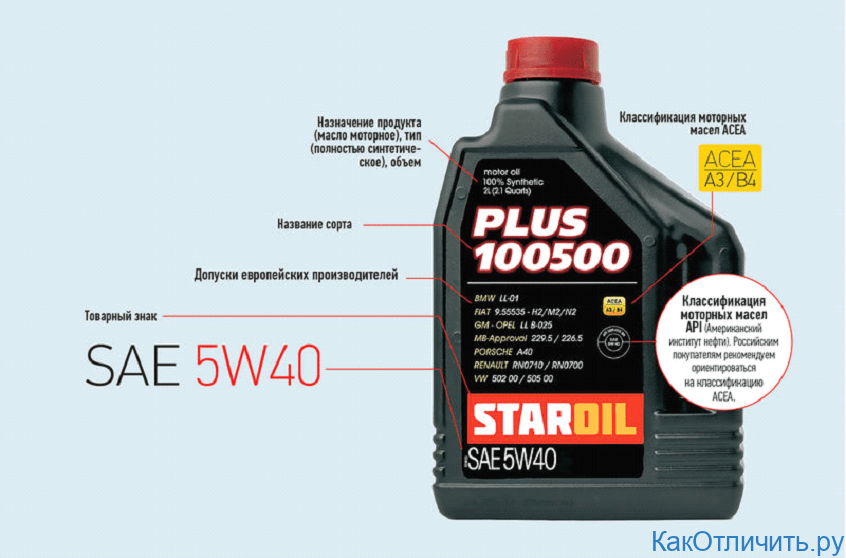
How to read the marking of engine oil on the package? Get to know the classification of motor oils and find out what viscosity grade the motor oil has
Content
Engine oil is an essential component for the proper operation of a vehicle. A thin layer of oil is smeared inside the engine, the main task of which is to reduce friction. It also plays a role in cooling and sealing the drive. Check how to read engine oil labels.
Types of engine oils
Motor oils are divided into three main types. Depending on the oil base used, these are:
- Synthetic oils are made by combining chemical compounds. Their quality is higher than that of other species. They do well in high and low temperatures;
- mixed oils - they are also called semi-synthetics. They are made on the basis of mineral oil, but synthetic oil is also added during the production process;
- Mineral oils are obtained from the refining of crude oil. Used in older car models.
SAE Viscosity Classification of Motor Oils
The viscosity of an engine oil determines the resistance with which one molecule of oil flows through another. In oils with a lower viscosity, they flow more easily, and in oils with a higher viscosity, they are more difficult. Engine oil viscosity is rated on a scale from 0 (low viscosity) to 60 (high viscosity). These engine oil designations were created by the SAE (Society of Automotive Engineers).
An example of an engine oil viscosity grade is SAE 0W-40. Read it like this:
- the number before the letter "W" indicates how resistant the oil is to low temperatures; the lower it is, the lower the ambient temperature can be;
- the next number indicates the viscosity of the oil at high temperature. The higher the number, the higher the ambient temperature at which the motor can operate.
Engine oil viscosity - table of standards
The viscosity grade of engine oil allows you to choose the best type of fluid for your engine. According to the classification of motor oils, they can be divided into:
- winter;
- summer;
- all-weather oils - now replaced with all-weather oils.
The latter are adapted to work in conditions of high and low temperatures.
Engine oil specification - which one to choose?
Engine oil parameters are important for the correct operation of the drive. Your car manufacturer determines which oil is right for your model. This information can be found in the user manual. This is the most important criterion that should be followed when choosing engine oil. If you already have this information, then with the help of engine oil labeling you will choose the right product.
The manual will also tell you what the correct oil level is in your engine. This way you can estimate how much you need to add.
SAE oil specification - what should be a good engine oil?
SAE engine oil must meet the following conditions:
- high pumping efficiency, which ensures quick access of oil to the receiver;
- high viscosity at high temperature;
- endurance in frosty conditions;
- good kinematic viscosity.
API and ACEA engine oil quality classification. How to read the marking of engine oil?
Among the markings of engine oil, you will also find information about its quality. If you want to know if an oil you find in a store is good, you should look to see if it has the API and ACEA labels. Thanks to this, you will choose the product with the best parameters.
What is API quality classification
API is an oil quality specification introduced by the American Petroleum Institute. The packaging of the product must indicate that it meets the criteria set by that organization. This oil specification is denoted by two letters:
- C - means diesel engine;
- S - gasoline engine.
The second letter of the API corresponds to the quality of the oil. The further down the alphabet, the higher the quality:
- A to J for diesel engines;
- A to M for gasoline engines.
Nowadays, even the cheapest oils meet API requirements. Therefore, it is worth looking at a separate ACEA quality classification.
What is ACEA quality classification
Oils with the ACEA designation have a lower ash content that clogs the DPF and FAP filters. ACEA motor oil designations reflect the requirements of European car manufacturers. The organization ensures that the products with them meet the requirements of the engines.
ACEA is divided into classes:
- A - gasoline engines of cars;
- B - diesel engines of cars and minibuses;
- C - cars with modern exhaust gas cleaners;
- E - trucks with diesel engines.
Each class is assigned a number whose value determines the detailed requirements of specific engines.
Having knowledge of the marking of engine oil, you should also refer to the service book or manual. There you will find detailed information about the requirements for this drive. Now you can safely change the oil!
